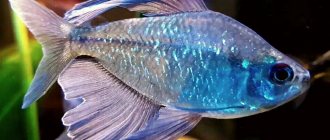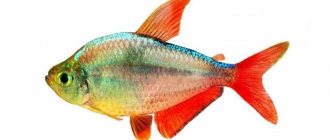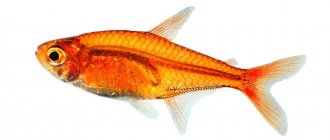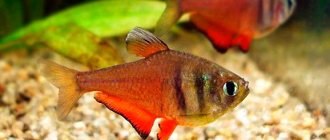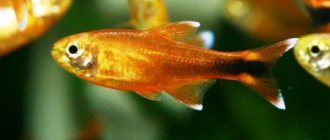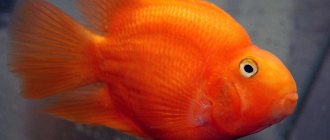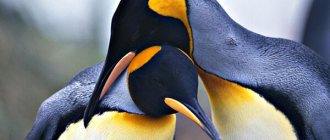5
(1)
Tetragonopterus is perfect for beginners in the aquarium business. An unpretentious aquarium fish easily adapts to almost any water and does not require specific conditions. Lives 5-6 years. Easily adapts to different aquariums. True, the fish is quite voracious and needs to be fed often. After all, if the tetra is hungry, it can bite its neighbors in the aquarium. It is better to keep fish in schools of 7 or more. An unpleasant feature of the species is that they can spoil the plants in the aquarium.
There is also an albino Tetragonopterus species. This fish is even more peaceful and loves warm water. A species with a veil-like fin is also known.
Tetradon, maintenance, breeding, food for tetradon
Tetradon, maintenance, breeding, food for tetradon – 3.2 out of 5 based on 11 votes
Tetradon belongs to the four-toothed family. There are several types of tetradons, differing in aggressiveness and size, as well as toxicity.
The body is usually clumsy and thick-skinned; the head is relatively large; eyes widely spaced; the skin is bare or covered with three-rayed spines; There are no pelvic fins, all other fins have only soft rays.
In a moment of fear, it swells and turns into a solid ball.
Life expectancy in captivity is up to 10 years.
Tetradons require a species aquarium with a volume of at least 110 liters.
Optimal water parameters: temperature 24-28°C, dH up to 19°, pH 6.5-7.5. A water change of 25-30% of the total volume per week is required.
The lighting can be dim or medium, but not bright.
There should be a thick layer of loose soil at the bottom of the aquarium.
Design is not of fundamental importance.
Tetradons are aggressive predatory fish. They show aggression both towards other fish species and towards each other. You can try adding large, moving fish as neighbors.
Food for tetradon
The optimal diet for tetradons consists of live food: corets, bloodworms, worms, shrimp, snails, fish, and shellfish. In addition to live food, fish can be fed with chopped hearts and liver.
Diet of fry: ciliates, Artemia and Cyclops nauplii, egg yolk, daphnia.
Breeding tetradons is still a problem, so every successful experiment arouses considerable interest.
Sexual characteristics are poorly expressed. Males are brighter colored and smaller than females.
Sexual maturity can reach from one to three years.
Spawning can be stimulated by adding fresh water, increasing the temperature, and increasing nutrition.
According to the type of reproduction, tetradons are divided into two groups: some lay eggs, which are then guarded by the male, on the substrate, while others spawn in the water column, and the eggs sink to the bottom or float. There is no parental care.
The eggs develop in 8-9 days. The productivity of tetradons is up to 500 eggs.
Description and photographs of tetradons, which can be purchased in our pet store:
- Tetradon mbu
- Tetradon fahaka or Nile tetradon
Content
The Diamondback Tetra can easily be called a fish that is ideal for beginners as it is highly adaptable and resilient. It can fit into almost any aquarium with small, peaceful inhabitants and different water parameters.
Although the tetragonopterus is unusually hardy, it is obvious that for its better well-being and the manifestation of its natural beauty potential, it is desirable to create conditions for it that are as close to natural as possible. This is not at all difficult to do:
It is important to remember that this is a schooling fish that needs to live in a group of at least 5 individuals. In such an environment, every animal will feel most comfortable. Tetras do not require large aquarium volumes, and for a flock of 5-6 tails, a container with a capacity of 30 liters or more is quite suitable. In nature, fish live in twilight, and too bright light can cause stress for them.
It is advisable to choose dim lighting for characins or place a number of floating plants in the aquarium that can create shaded areas. These fish do not touch greenery, so you can safely plant any vegetation you like. It is desirable that it be shade-tolerant, and it must be positioned in such a way that the fish have free areas for swimming. There are also no special requirements for the soil and decorations; you can choose the elements that are most convenient for you. Natural decor made from driftwood and ordinary soil, such as coarse river sand, will look especially organic. Sometimes, to recreate the biotope of South America, some aquarists use special preparations that color the water brown. To do this, you can use brewed and cooled tea, and put dried birch, oak and almond leaves on the bottom. All these elements contain tannins, which are extremely beneficial for South American fish. The foliage is removed from the aquarium as it deteriorates, which occurs after 2-3 weeks. The flow in the aquarium should be moderate, not encouraging the fish to fight the flow.
Recommended water parameters:
- temperature: 16-28 °C;
- acidity: 5.5-8.5 pH;
- hardness: 1-20 °dH;
- weekly changes of a quarter of the water in the aquarium.
As you can see, this fish can easily tolerate fluctuations in parameters. This makes it a universal aquatic pet that will forgive its owner many mistakes made due to inexperience.
Spawning
Spawning begins early in the morning. The males begin to vigorously pursue the female, after which they drive her into the bushes. Here the female lays eggs, and the males fertilize her. Mating games with the pursuit of the female are repeated several times.
Tetragonopterus eggs are very small; they scatter throughout the aquarium and settle on the nitella and plant leaves. Breeders eat eggs with pleasure, so immediately after the end of spawning they are returned to the general aquarium.
Return to content
Tetragonopterus (Diamond Tetra) (Hyphessobrycon anisitsi)
Tetragonopterus (Diamond Tetra) (Hyphessobrycon anisitsi)
Another name is tetra roach.
Size
M – up to 4 cm, L – up to 6 cm.
Habitat
In nature, it lives in the reservoirs of Argentina and Paraguay.
Description
Externally, Tetragonopterus resembles a roach, which is why it is also called the roach tetra. The fish has fairly large scales, silver in color, shimmering greenish in reflected light.
The anal, caudal and ventral fins are deep red, while the dorsal and pectoral fins are transparent.
Along the body, starting from the head and to the base of the tail, there is an inconspicuous greenish stripe, which ends at the base of the tail with a dark diamond-shaped spot.
It should be said that there are varieties of fish with yellow tail fins. Females have a more rounded body and a more faded body color. In addition, females are larger in size than males. Under natural conditions, the length of fish reaches 10 cm; in an aquarium, their size is within the range of 7-9 cm.
Keeping in an aquarium
Tetragonopterus is a schooling fish, very fast. During games, fish are able to jump out of the water, so the aquarium must be covered with a lid.
An aquarium for keeping a flock of 8-10 tetragonopterus should have a volume of 80 liters or more. In the aquarium, it is advisable to create areas densely planted with plants with long leaves reaching the surface of the water.
Water parameters for keeping fish should be the following: temperature 20-25°C, hardness dH 7-20°, acidity pH 6.5-8.0. Filtration and weekly replacement of 1/4 of the water in the aquarium are required. In bright light and a large number of living plants, you can do without aerating the water.
Compatibility
Fish can be kept in a common aquarium with other peace-loving fish. Tetragonopteruses are aggressive towards smaller fish. You should also not keep fish with veil tails with them.
Editorial: Echinodorus schluthera
Feeding
They do not have any special requirements for food; they happily eat live, frozen or dry food.
They are reluctant to take food from the bottom, so you need to throw food in small portions so that the fish have time to eat it before it sinks to the bottom.
Breeding
Tetragonopterus reaches its sexual maturity by 6 months of age.
For fish spawning, it is best to choose the period from April to June. To do this, choose a suitable aquarium with a volume of 10-20 liters. Sandy soil is poured to the bottom and filled with fresh water. The perimeter of the spawning aquarium should be planted with plants, and nitella should be placed on the bottom.
Before spawning, the spawners are kept separately for a week and intensively fed with a variety of foods. After this, the female and two males are placed in a spawning tank. At first, the female chases the males and it may seem that she cannot form a pair, but this is not the case.
The eggs are tiny in size and, when spawned, scatter in all directions, sticking to the leaves of plants. During the spawning process, spawners actively eat their eggs, but before you hatch the fish, there will definitely be several hundred eggs left.
After spawning, the female and males are separated and kept apart from each other so that the female has the opportunity to rest.
Around the third day, microscopic fry hatch from the eggs, which can be seen everywhere - on the glass of the aquarium, on plants and on the sand.
With a balanced diet, the fry develop very quickly.
The lifespan of tetragonopterus in aquarium conditions is approximately 6 years.
Selection and design of an aquarium
Tetragonopterus live in schools. For a family of 8-10 fish, an 80-liter aquarium is quite suitable. Tetra roach is an excellent jumper, so the aquarium should be tightly covered with a lid.
River sand, pre-treated with boiling water, can be used as soil. Plants with hard, thick, long leaves that reach the surface of the water are planted in the ground. It is better to use hornworts, pinnates, bolbitis and microsoriums for this. Plants should not interfere with the free movement of the school, which prefers to spend most of its time in the middle layer of water.
The diamondback tetra is a vegetarian that quickly gnaws on any aquarium plants, with the exception of anubias and Java moss. This is why aquariums with roach tetras use either plants with hard leaves or artificial “greenery”.
Return to content
Description
Tetragonopterus (lat. Hyphessobrycon anisitsi, English. Buenos Aires Tetra) is a representative of the characin family, also known to aquarists under the following names: rhomboid tetra, Buenos Aires, roach. This fish inhabits the vast basin of the Parana River, which flows through Brazil, Paraguay, Argentina and Uruguay.
Typical natural habitats of our heroine are quiet backwaters, streams, and shallow oxbow lakes with a lot of submerged vegetation and wood. The water in such places has a slightly brownish tint and is enriched with tannins.
Tetra Buenos Aires has a short body length - 5-6 cm. It is tall, flattened laterally, and colored silver-olive. Along the lateral line there is a shiny green stripe, gradually gaining black color and expanding at the base of the caudal peduncle, which is why a diamond-shaped spot appears on it, thanks to which the fish got one of its names. The fins of the animal are fiery red, and behind the dorsal, like most characins, there is a small fatty one. The fish has large eyes, the upper part of which is often painted red, the snout is raised upward and resembles the mouth of a piranha.
Tetragonopterus has albino or golden forms, which are no less popular than the wild variation.
The swimming style of the Buenos Aires tetra is typical of a characinka. The fish often hover in place and maintain the position of their body with small jerks. When brothers swim into their tiny territory, tetragonopteruses begin to organize a completely non-bloody mini-duel, which from the outside looks more like a dance.
Conditions of detention
Keeping tetragonopterus does not require any additional knowledge or skills. This fish requires water with the following characteristics:
- optimal temperature is 20-25 oC, temperature reduction to 16 oC is permissible;
- acidity – from 6.5 to 8 units;
- hardness – from 7 to 20 units.
Daylight hours are 10 hours. With intense lighting and an abundance of living plants, additional water aeration is not required. To dim too bright lighting, you can place floating plants in the aquarium.
Tetragonopterus does not like to collect leftover food from the ground, so the aquarium should be equipped with a powerful filter. You need to change the water in the aquarium more often than usual, but in small portions. The normal replacement regime is 25% water weekly. Water for change should be clean and well settled.
Albino
Feeding
Tetragonopterus is unpretentious in food. He absorbs any food, dry, live or combined, but most of all he loves daphnia. With regular feeding with live and frozen food, the color of roach tetras becomes brighter and more saturated. In this case, the fish grab the bloodworm while it sinks to the bottom. Remains of food are reluctantly lifted from the ground, so it is better to place the bloodworms in a floating feeder, through which it will gradually penetrate into the water and be eaten by tetras.
The basis of the diet of tetragonopterus can be flakes. To reduce the fish's desire to eat aquarium plants, add spirulina, lettuce or cabbage leaves scalded with boiling water, boiled potatoes, and dandelion leaves to the flakes. It is recommended to alternate dry food with each other.
Return to content
Tetragonopterus
•
•
Tetragonopterus
Tetragonopterus
found in the La Plata River.
They were first brought to Europe in 1922; they were widespread here until 1941 and have survived to this day. In aquariums, Tetragonopterus
usually reaches 5-6 cm in length, sometimes 12 centimeters.
The main color of Tetragonopterus is yellowish-brown with a metallic sheen; the belly is silvery. From the middle of the caudal peduncle to the end of it, a black stripe stretches along the lateral line, expanding into a diamond-shaped spot at the base of the caudal fin. All fins, except the pectoral ones, are colored red, more intense in the anal one.
The iris of the eyes is red in the upper half. Conditions for keeping and feeding Tetragonopterus
simple. The water temperature in the aquarium can vary from 12 to 25° (preferably 18-24°). In addition to food of animal origin, plant-based foods are also desirable. Tetragonopterus are not demanding on the pH of the environment, hardness and freshness of water.
Obtaining offspring is easy. Tap water is usually used. Fish are bred in large frame aquariums with a bottom area of 2000 cm2 and a water layer of 25-35 cm. A pinnate bush, several sagittaria bushes, and small-leaved plants covering the bottom are used as a substrate. You can do without plants.
The larvae hatch after 24 hours, and after four days they turn into fry, begin to swim and feed on ciliates, nauplii and finely crushed lettuce leaves, and later on small cyclops.
The Latin name of the fish is hemigrammus caudovittatus.
COMMENTS ON THE TOPIC
Reef fish:
• butterflies• triggerfish• angels• moray eels• clowns• surgeons• dogs
Freshwater fish:
• guppies• discus• catfish• gourami• angelfish• cockerels• rasboras• goldfish online diagnosis of diseases, symptoms in fish, drugs for treatment
Snails, crabs, crayfish, shrimp, chameleons, newts
Glued aquarium, denitrifier, DIY aquascape, aquarium first aid kit, water softening, leaking aquarium
INTERESTING TO READ
Erythrosonus
Erythrozonus
comes from the forest reservoirs of Western Guiana.
This fish was first brought to Europe in 1939, and to us in 1957. Females reach 4.5 cm in length, males are usually smaller. The color of the translucent body of Erythrosonus
is yellowish, turning white on the abdomen. From the head...
Hemigrammus
The genus
hemigrammus
is very close to the genus Hifessobricon. Representatives of this genus can be distinguished from the latter by the presence of scales on the body near the caudal fin. The recommended housing and feeding conditions are the same as for the Hifessobricon genus, but, as a rule,…
From the editor: The most unpretentious aquarium fish
Appearance
Compared to other tetras, Tetragonopterus is a fairly large fish, reaching a length of 5-6 cm, less often 8-10 cm. Its body is diamond-shaped, strongly compressed laterally and moderately elongated in length. The mouth is massive, with a protruding lower jaw. The body of the fish is protected by large silver scales, the tail and fins are red. The tail section is decorated with a black diamond-shaped pattern. A faintly iridescent green stripe runs from the middle of the body to the head of the fish.
Sex differences in this species of fish are not significant. Males are smaller and brighter than females, sometimes their fins have a yellowish tint. Females are larger than males and can be recognized by their rounded bellies.
Reference. Among tetragonopteruses, there are albinos with golden scales and red eyes, as well as individuals with veil fins. Albinos are more demanding of living conditions.
Return to content
Interesting video with erythrozonus +
Subscribe to our YouTube channel so you don't miss anything
All about guppiesAquarium for beginners
Fish from the same family:
- Diamond tetra or Diamond Moenkausia (Moenkhausia pittieri)
- Red-nosed tetra (Petitella georgiae)
- Tetra royal (imperial) (Nematobrycon palmeri)
- False royal tetra or Inpaichthys kerri
- Red-eyed tetra or Congo yellow (Arnoldichthys spilopterus)
- Common Congo (Micralestes (Phenacogrammus) interruptus)
- Lemon tetra (Hyphessobrycon pulchripinnis)
- Fire tetra or Erythrozonus (Hemigrammus erythrozonus)
- Chilodus punctatus
- Philomena or red-eyed Moenkhausia (Moenkhausia sanctaefilomenae)
- Flashlight (Hemigrammus ocellifer)
- Tetra von Rio (Hyphessobrycon flammeus)
- Ternetsia (Gymnocorymbus ternetzi)
- Tetragonopterus (Hemigrammus caudovittatus)
- Tetra is bloody. Callistus (Hyphessobrycon callistus)
- Ctenobrycon - “ruble”, “coin” (Ctenobrycon spilurus)
- Pulcher (Hemigrammus pulcher)
- Pristella (Pristella maxillaris)
- Nannobrycon eques
- Natterer's piranha (Serrasalmus nattereri)
- Common ornathus (Hyphessobrycon bentosi bentosi)
- Ornatus red (phantom) (Megalamphodus sweglesi)
- Ornatus (phantom) black (Megalamphodus megalopterus)
- Neon simple (Paracheirodon innesi)
- Neon red (Paracheirodon axelrodi)
- Neon black (Hyphessobrycon herbertaxelrodi)
- Neon green (Hemigrammus hyanuary)
- Nannostomus Beckford. Red Nannostomus (Nannostomus Beckfordi)
- Nannostomus marginatus. Nannostomus marginatus
- Mexican astyanax (Astyanax fasciatus mexicanus)
- Blind fish (Astyanax mexicanus)
- Afiocharax Anisitsa. Red-finned Aphyocharax (Aphyocharax anisitsi)
- Afiocharax Rathbun. Aphyocharax rathbuni
- Dragon (Corynopoma riisei)
- Minor (Hyphessobrycon minor)
- Rubrostigma. Red-spotted tetra (Hyphessobrycon erythrostigma)
- Serpas (Hyphessobrycon serpae)
- Yellow tetra (Hyphessobrycon bifasciatus)
- Mirror tetra (Hyphessobrycon griemi)
- Hyphessobrycon heterorhabdus
- Red-nosed tetra (Hemigrammus rhodostomus)
- Hemigrammus marginatus
- Metinnis Schreimuller. Mirror fish (Metynnis hypsauchen)
- Moenkhausia oligolepis
- Neon blue (Paracheirodon simulans)
- Hasemania. Copper fish. Copper tetra (Hasemania nana)
- Taieria crooked. Taieria appearance. Thayeria boehlkei penguin
General characteristics
Tetragonopterus as a species was first described at the beginning of the twentieth century, when it was studied by European naturalists. Natural habitat - South American reservoirs (Brazil, Argentina, Paraguay). Inhabits many biotopes, hunts insects and their larvae, and gnaws aquatic plants.
From the editor: Copper tetra or Hasemania
It is considered a large tetra, since its body size is more than 5 cm, and accordingly, its life expectancy is up to 7 years. The body color is silver, with neon shimmer. The color of the fins is red, and a horizontal dark stripe begins from the center of the body, which ends with a black dot at the base of the tail. Males are brighter in color. Females have a full and round abdomen.
As a result of breeding work, the albino form was developed. The body color is silver, the fins are red. The body size of an albino is 5-6 cm. An albino has red eyes and a high dorsal fin. These fish prefer to live in warmer water, and they are calmer in nature, unlike their relatives. The water temperature for their maintenance must be at least 20 degrees Celsius.
Watch a flock of Tetragonopterus.
Content Rules
Tetragonopterus, like any tetra, is an active fish that can be kept in an aquarium with enough space for swimming. It is recommended to put 7 fish into the tank at once, this way they will look more beautiful and they feel calm in the company. A flock requires a tank with a capacity of 50-80 liters.
River sand is suitable as a soil, which must be pre-treated with boiling water. There are no special requirements for lighting - the amount of daylight is 10 hours; you can put floating plants in the aquarium, which will create diffused light. The tank must be covered with a lid, since these fish jump well. Tetragonopterus is a known destroyer of aquarium plants. It is believed that it can attack all flora, except Javanese and Thai moss. However, it will not destroy greens if there is enough fiber in the diet. It is recommended to install an internal filter with a protective mesh in the aquarium and change the water once a week. Acceptable parameters of the aquatic environment: temperature 20-27 ° C, acidity 6.0-7.5 pH, hardness - from 2 to 30 dGh.
Tetragonopterus is well suited for settling in a community aquarium. If there is a flock, then they are non-aggressive, even friendly. Excessive activity occurs if there are few of them. Small, but fast and active fish are suitable as neighbors for them. For example, these are tetras minor, Congo fish, thornets, and erythrozonus. To prevent diamondback tetras from attacking other inhabitants of the pond, they should be given plenty of plant and protein foods.
Tetragonopterus is an omnivorous fish that feeds on insects and plants. In an aquarium it can eat live, frozen, and artificial food. For the bright color of the scales, protein is needed, which is found in live or frozen foods. Varied feeding is the key to health and long life, as well as productivity during spawning. You can feed flakes with spirulina, tubifex, bloodworms, cyclops, chopped zucchini, cucumbers, lettuce and spinach.
Look at the feeding of Tetragonopterus.
How to breed in captivity
Diamondback tetras are spawning fish. They become sexually mature at the age of 6-10 months. Java moss serves as a spawning substrate. You need to put a separator mesh on it. Breeding is not difficult - a few weeks before spawning, the selected pair of spawners must be fed with live food, then they are released into a prepared spawning tank with a volume of 100-200 liters. Keeping in a spawning tank requires the presence of a filter with a weak current, small-leaved mosses, and nylon threads.
The water temperature in the spawning tank should be 25-28oC, slightly slightly acidic pH. You can launch several pairs of females and males for spawning, as a result, the brood will be large (more than 1000 eggs from one female). After reproduction, the producers are removed. Otherwise, they will eat the eggs. After 1-2 days the larvae of the fry will hatch, and on the fourth day they will swim like fry. Starter food – ciliates, rotifers. Low lighting in the container with fry is recommended.
Preparation for reproduction
The end of April - beginning of May is considered a favorable time for spawning. A few days before spawning, the female and male are placed in different aquariums and transferred to live food. For spawning, you can use a pair of fish, a female with two males, or a small flock of equal numbers of females and males.
Spawning takes place in a spawning tank - a small aquarium with a capacity of 10-20 liters. It is better to use an elongated aquarium with a side height of 25-30 cm.
Disinfected river sand is poured into the spawning tank and fresh, settled water is poured. The center of the aquarium is left free, and aquatic plants are planted along the edges. The bottom is covered with nitella or fine mesh. Organize a gentle flow and filtration. The water is slightly acidified and heated to 26-27 oC. When the spawning tank is ready, future producers are transplanted into it.
Return to content
For keeping Erythrosonus - firefly tetra, compliance with these conditions may be less strict!
It is enough to maintain the pH at 7.0 and gH to 10-12. The fish is schooling, mobile, active when feeding (only the food should be small enough - the fish has a small mouth). Other sized tetras (various neons, other small hifessobricones and chemigrammus) are quite suitable for company; among other soft-water fish with erythrozonus, you can keep small armored corydoras catfish, as well as small American and African carptooths; small barbs...
But keep in mind that Erythrosonus (like most fish in this area of South America) tolerates some increase in nitrites and nitrates well, but does not tolerate large amounts of fresh water when changing it! It is better to replace in small portions, but more often...
Feeding aquarium fish should be correct: balanced, varied. This fundamental rule is the key to the successful keeping of any fish, be it guppies or astronotuses. The article “How and how much to feed aquarium fish” talks about this in detail; it outlines the basic principles of the diet and feeding regime of the fish.
In this article, we note the most important thing - feeding fish should not be monotonous; the diet should include both dry food and live food. In addition, you need to take into account the gastronomic preferences of a particular fish and, depending on this, include in its diet food either with the highest protein content or, conversely, with plant ingredients.
It should be noted that when purchasing any dry food, you should pay attention to the date of its manufacture and shelf life, try not to buy food in bulk, and also store food in a closed state - this will help avoid the development of pathogenic flora in it
